
views
X
Trustworthy Source
Go Ask Alice
Medical advice site with content written by health promotion specialists affiliated with Columbia University
Go to source
Whether you're using a blender or food processor, or have a fancy juicer, this article will walk you through how to make your own carrot juice.
Prep time: 20 minutes
Cook time: 15-30 minutes
Total time: 35-50 minutes
Making Carrot Juice with a Blender or Food Processor
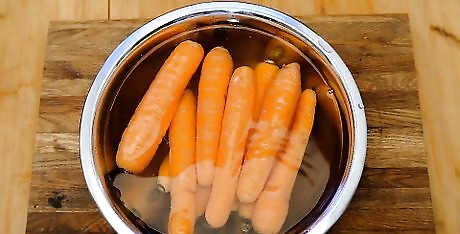
Clean your carrots. Wash 2 pounds (1 kg) of carrots (about 8) under cold running water. Scrub them with a vegetable brush if you can. Use a knife to cut off the broader end, where the carrot either was or still is attached to the green, leafy part of the plant. If you are especially concerned about pesticides on the surface of your carrots, you should peel them. This does not significantly reduce the nutritional value of your juice. You can also buy organically grown carrots, which cost more, but are pesticide-free.
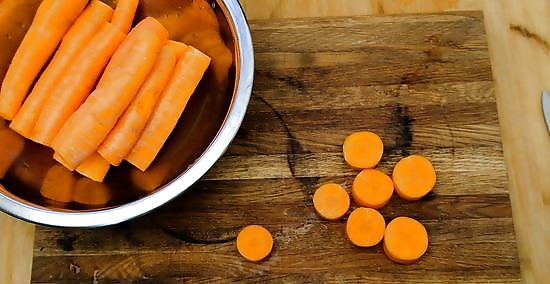
Cut the carrots into manageable pieces. Even if you have a high-quality blender or food processor, you don’t want to risk damaging your equipment by throwing four whole carrots in there. Cut your carrots into manageable chunks before breaking them down into a juice. Any food processor or blender should work fine with 1 to 2 inch (2.5 to 5.1 cm) chunks of carrot.
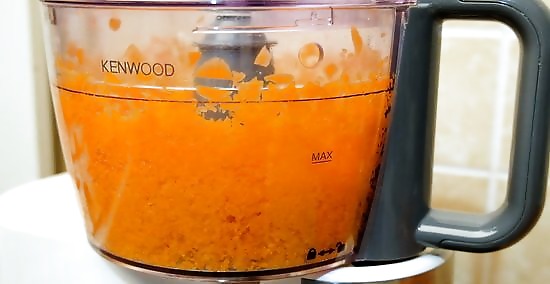
Puree the carrots. Place your cleaned, cut carrots in a blender or food processor. Process until finely chopped or mashed. Add a small amount of water if the carrots are not very moist, and need a little help breaking down. Note that a food processor will not puree the carrot as well as a blender will. It’s not that big of a problem, but use a blender if you have one available.
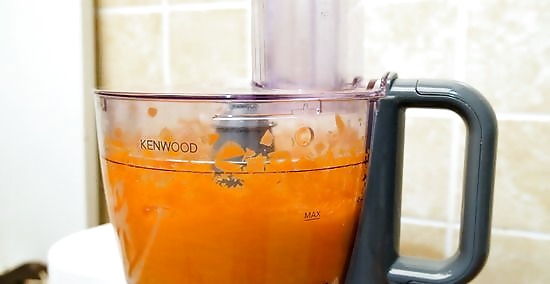
Mix with water. You want to thin out the taste of pure carrot a little by mixing the puree with water. This will both make it taste better, and also give you more juice. . Bring two cups of water to a boil. Mix the carrot puree and hot water in a large glass container. Stir to ensure an even spread of puree throughout the mixture.
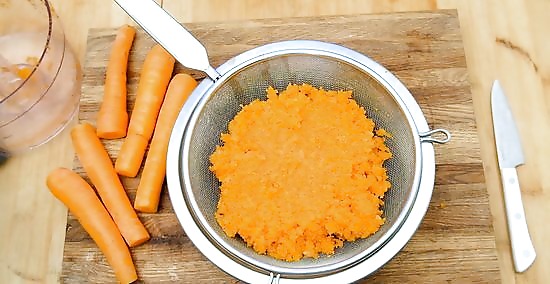
Let the mixture steep. One of water’s most incredible properties is how well it takes on nutrients and flavors when it’s hot. Just like tea, the longer you allow your carrot puree to steep in hot water, the better the juice will taste and serve your body nutritionally. Allow it stand for 15 to 30 minutes.

Remove the pulp. Using a hand strainer, strain the juice into a 2 US-quart (2,000 ml) (2 L) pitcher. Using the base of a glass or other blunt object, press the mash to extract as much juice as possible from the strainer. If you want to strain out even more pulp, pour the resulting juice through a jelly strainer.
Add orange juice. It's optional, but it's tasty!
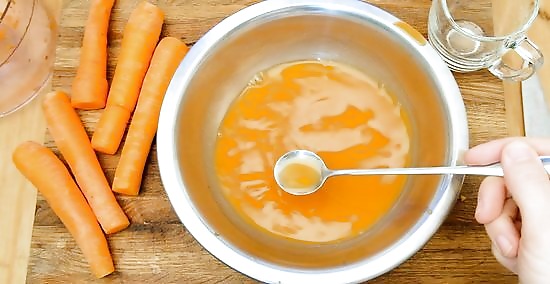
Adjust the blend. Depending on how rich you like your carrot juice, add additional water to taste.
Serve immediately. Juice begins oxidizing and losing valuable nutrients immediately — especially if you’ve used a high-speed centrifugal juicer. You should try to drink your juice as soon after making it as possible, either at room temperature or over ice — however you prefer it. However, if you must store it, refrigerate it for no more than 24 hours.
Using a Juicer

Clean your carrots. Wash 2 pounds (1 kg) of carrots (about 8) under cold running water. Scrub them with a vegetable brush if you can. Use a knife to cut off the broader end, where the carrot either was or still is attached to the green, leafy part of the plant. If you are especially concerned about pesticides on the surface of your carrots, you should peel them. This does not significantly reduce the nutritional value of your juice. You can also buy organically grown carrots, which cost more, but are pesticide-free.
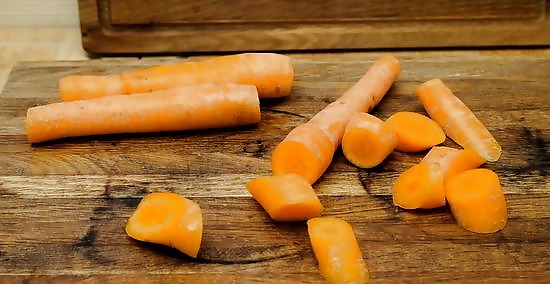
Chop your carrots. If you have an industrial-strength juicer, this step may not be necessary. If not, chop your carrots into 2 or 3-inch chunks.

Prepare your juice receptacle. Place a tall glass under the juice spout. Make sure it’s stable, so it won’t tip over when it fills up with juice, and make sure that it’s large enough to serve as a receptacle for the amount of juice you’re making. One pound of carrots will produce about a cup of juice.
Feed the carrots into the juicer. Drop the carrots or carrot chunks into the juicer, and push down on them with the juicer’s attachment to force them through the machine. Keep an eye on your glass. If your carrots are extra-juicy, you may end up with more juice than glass. Conversely, if your carrots are dried out, you may need to add more. The wider the funnel on your juicer, the faster you’ll be able to juice all your carrots.
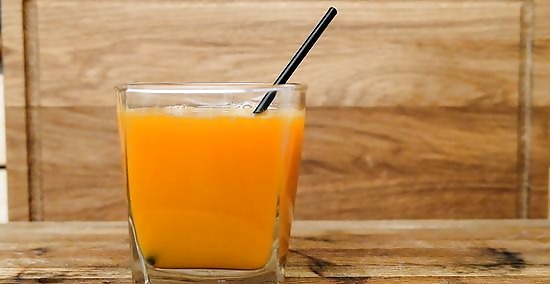
Serve immediately. Juice begins oxidizing and losing valuable nutrients immediately — especially if you’ve used a high-speed centrifugal juicer. You should try to drink your juice as soon after making it as possible, either at room temperature or over ice — however you prefer it. However, if you must store it, refrigerate it for no more than 24 hours.


















Comments
0 comment